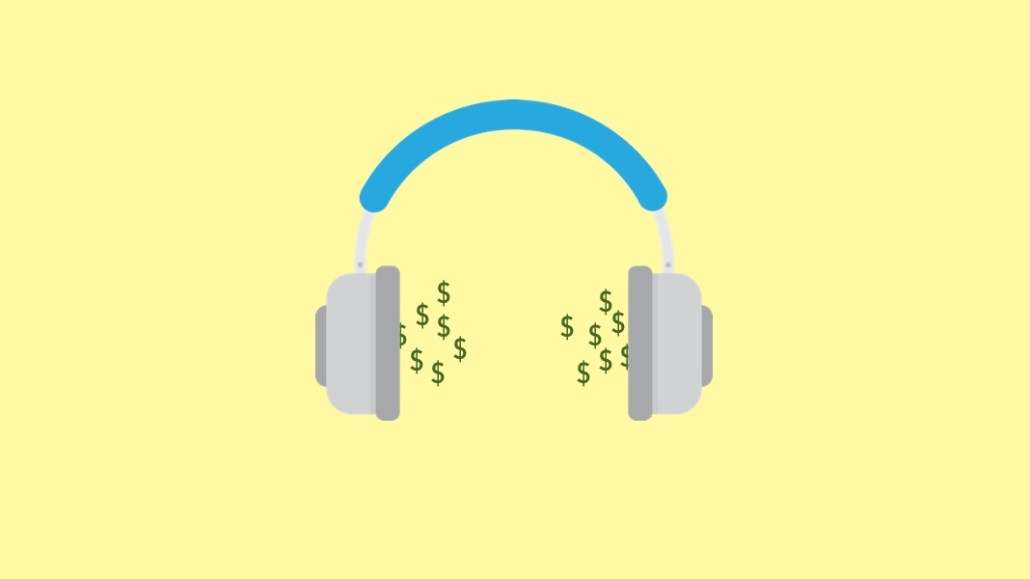With new tools, podcast publishers are exploring consumer revenue models

In 2019, podcasting might have its own pivot to paid.
In the space of one week, two separate companies have unveiled tools designed to help podcast publishers and creators turn their listeners into paying customers. On Thursday, Feb. 7, Substack, a newsletter subscription platform used by writers including Bill Bishop and Matt Taibbi, announced Substack Audio, which emails private podcasts to subscribers. This past Tuesday, Slate unveiled a product called Supporting Cast, which allows users to pay and subscribe to a private podcast feed with just a handful of clicks.
They join Anchor, a podcast hosting platform that Spotify acquired in February, which announced in August that it would allow users to accept pledges from listeners. This was part of a crop of products from Anchor that make it easier for audio content producers to monetize their work directly.
“We’re all testing [paid-revenue methods] out to see what actually sticks,” Stitcher CEO Erik Diehn said. “Is it tipping, is it a publisher-by-publisher premium subscriber model, is it the Patreon single show, single creator support model, is it a Netflix-type model? There’s not going to be one thing.”
Testing for paid podcasting comes at a time when publishers are getting more and more serious about making money from podcasting, even though ad revenue is still lagging. The format still amounts to a rounding error in terms of overall ad spending. Advertisers spent about $315 million on the format in 2017, compared to nearly $88 billion spent on digital advertising that year, according to IAB figures.
And while its audience demographics skew in directions that are desirable for advertisers, only about 17 percent of Americans aged 12 or older listen to podcasts on a weekly basis, according to Edison Research estimates.
Because of these limitations, the number of podcasters betting on consumer revenue has been growing for a while, mostly out on the long tail. The number of podcasters using Patreon, which enables more than 3 million people to support creators on its platform, has quadrupled over the past three years, making it the second-largest content category on the platform, a spokesperson said.
Some audio publishers that bet early on consumer revenue have turned it into a meaningful source of revenue. Slate Plus, the membership program anchored by Slate’s podcasts, has amassed nearly 50,000 subscribers paying between $35 and $59 per year, according to David Stern, Slate’s vp of product and business development.
For the most part, podcasting has not developed into a medium where expensive content such as scripted series can live solely behind a paywall. Though platforms such as Spotify expect that it will eventually get there — Gimlet will soon start producing shows that are exclusively for Spotify, co-founder Alex Blumberg said — most producers say economic limitations compel them to support their biggest shows through advertising.
For example, Wondery, which predicts that 20 percent of its revenue in 2019 will come from sources other than advertising, does not put any of the highly produced, scripted fare it’s known for behind its Wondery+ paywall. Instead, the company focuses on content that’s cheaper to produce, such as extras and behind-the-scenes content for super fans. For scripted, resource-intensive material, Wondery needs advertising to support production, Wondery founder Hernan Lopez said.
In other cases, publishers are splitting the difference by embracing a windowing strategy, which first started to gain traction in podcasting in 2017. For example, the second season of “Wolverine: The Long Night,” a podcast that Stitcher co-produced with Marvel, will be exclusive to Stitcher Premium for several months before emerging from behind the paywall.
That windowing strategy allows podcast producers to have their cake and eat it, too, attracting subscriber fees and eventually advertiser dollars. But as 2019 wears on, it may wind up that more publishers convince creators that shows can live purely behind there.
“For some premium products, we’re starting to hit a scale within certain audiences where there isn’t that much of a trade-off,” Diehn said. “You can have tens of thousands of people listening to something and [still be] getting a big check.”
More in Media

Media Briefing: ‘Cloudflare is locking the door’: Publishers celebrate victory against AI bot crawlers
After years of miserably watching their content get ransacked for free by millions of unidentified AI bot crawlers, publishers were finally thrown a viable lifeline.

How Vogue could navigate potential industry headwinds as Anna Wintour — who agency execs say made ad dollars flow — brings on new edit lead
Anna Wintour’s successor at Vogue will have to overcome the myriad of challenges facing fashion media and the digital publishing ecosystem.

Here are the biggest misconceptions about AI content scraping
An increase in bots scraping content from publishers’ sites represents a huge threat to their businesses. But scraping for AI training and scraping for real-time outputs present different challenges and opportunities.








